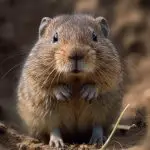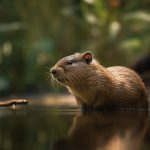How Deep Do Gophers Dig Their Tunnels? Understanding Their Burrowing Habits
Gophers are one of the most common and frustrating pests that homeowners and gardeners face. These small, burrowing rodents are known for their destructive behavior. They dig tunnels through lawns and gardens, damaging roots and creating unsightly mounds of dirt.
By understanding the depth of gopher tunnels, you can know what pesticides to use. As such, you can implement targeted garden pest control measures. These measures, such as installing barriers or traps, will prevent and reduce gopher activity.
So, how deep are gopher tunnels? Generally, gopher tunnels are 4 to 6 feet below the ground’s surface. But they can be much deeper depending on the soil conditions and other environmental factors. These animals also have complex tunnels, with some shallow sections and others deeper.
In this article, we’ll provide a comprehensive guide to understanding gopher behavior and the depths of their tunnels. We’ll cover how to identify gopher tunnels, their burrowing habits, and effective strategies for controlling gopher populations.
Types of Gopher Tunnels
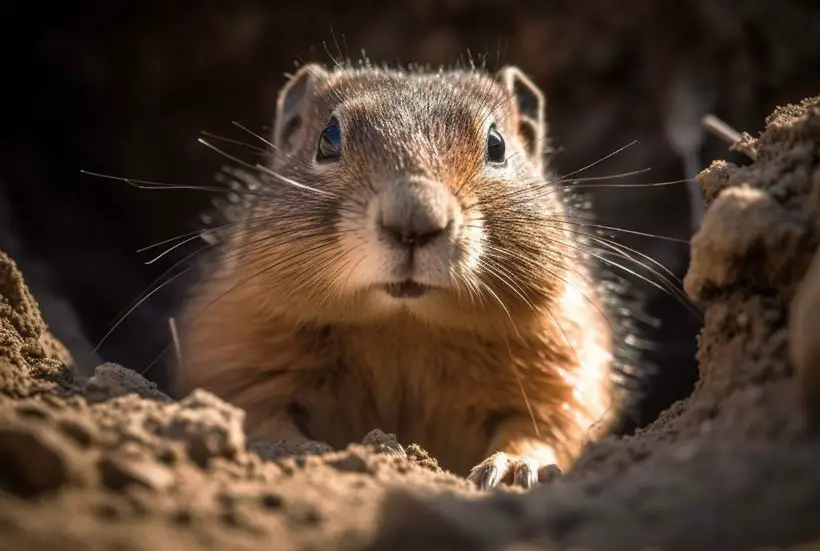
Gophers create two main types of tunnels: surface and deep.
1. Surface Tunnels
These tunnels are near the ground’s surface and are usually located in areas with grass or other vegetation. They are often identified by the mounds of dirt that the gophers push up as they dig. Within the surface, they dig different kinds of tunnels, including:
- Lateral runs: These tunnels branch off the main runway and connect to the outside. They can be identified by their characteristic “horseshoe” shape. The shape helps the gopher turn quickly and escape predators. They are also inclined at about 45 degrees.
- Feed hole: This contains food sources, such as roots or bulbs. They are often located close to the surface. The holes can be identified by their location near the base of plants.
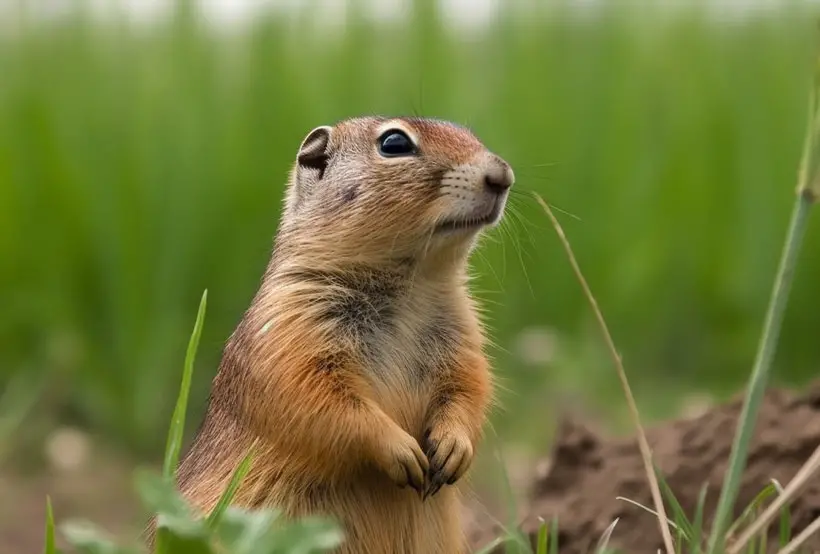
2. Deep Tunnels
They are located further underground and are more difficult to identify than surface tunnels. Within the deep tunnels, there are several types of tunnels within the deep tunnels as well:
- Main runway: This tunnel is the primary route gophers use to travel between feeding and nesting areas. The main runway is usually deeper underground than the lateral run and food hole. It is also wider than lateral runs.
- Drainage tunnel: Gophers construct drainage tunnels to prevent their burrow system from flooding during heavy rains. These tunnels are typically deeper and branch from the main runway.
- Waste hole: These tunnels are typically located near the nesting area and are often deeper than other types of tunnels. Gophers may use waste holes to excrete, mark their territory and communicate with other gophers through scent.
- Nesting area: This is where gophers sleep and raise their young. Gophers line their nesting area with soft grass and leave to keep their young warm and comfortable.
- Food storage: Gophers create storage tunnels to store food for later consumption. These tunnels are typically larger and deeper than other surface tunnels and can be up to a foot or more in-depth.
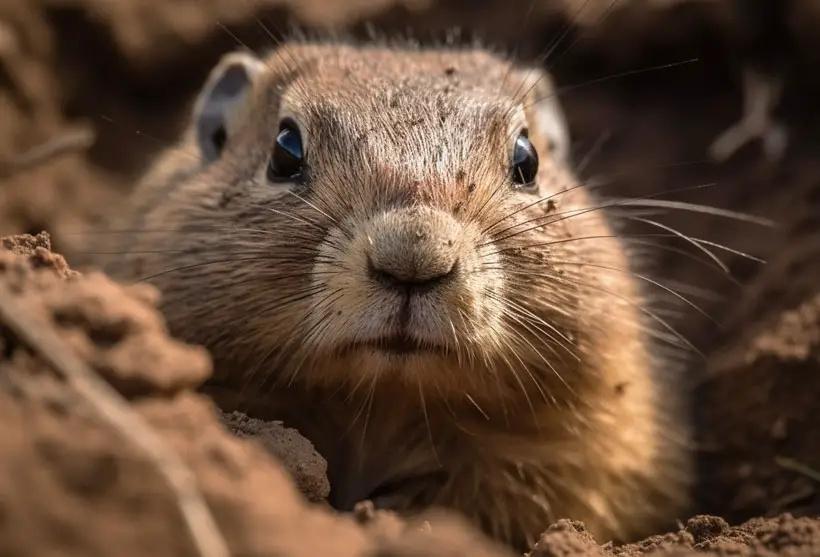
Food storage tunnels can be identified by their location near feeding sites. These chambers are lined with grass or other plant material to keep the food fresh.
Comparison of Surface and Deep Gopher tunnels
Here is a table with the comparison:
| Feature | Surface Tunnels | Deep Tunnels |
|---|---|---|
| Location | Near the surface | Deep underground |
| Purpose | Feeding, lateral runs | Nesting, waste deposit, drainage, food storage |
| Visibility | Visible as mounds | No visible signs |
| Damage caused | Damage to plants, roots, and lawns | Structural damage to nearby buildings and retaining walls |
| Predators | Attracts predators like snakes and coyotes | Not likely to attract predators |
How Deep Do Gopher Tunnels Go?
Here are details on various gopher tunnels’ depth and size:
- Feeding holes: They can be as shallow as 6 to 12 inches if the gophers feed on tubers. However, if they feed on other plants, the feeding holes can be found at various depths. The diameter of feeding holes is usually around 2.5 inches.
- Lateral runs: These holes have a 2.5 to 3.5 inches diameter and these are visible on top of the soil. The gopher tunnel depth measurement can be between 3 to 4 inches.
- Main runway: This is the primary route the gophers use to travel between feeding and nesting areas. It has a diameter of around 3 to 4 inches and a depth of around 3 to 4 feet.
- Food storage: These tunnels are typically larger than other tunnels. They have a diameter of around 6 to 10 inches and a depth the same as the main runway.
- Nesting area: These areas are larger and more complex than other tunnels. They have a diameter of around 10-15 inches and a depth of around 5 to 6 feet.
- Waste hole: It has a diameter of around 2 to 3 inches and is deeper than the nesting area. So, you would expect to discover it at 6 feet and above.
- Drainage tunnel: This is the deepest of all the tunnels in the system. It needs to be deeper so that it can collect all the water in all the other tunnels. You can expect to find the tunnel deeper than 6 feet.
Here is an image to help you understand the locations and the depths of various tunnels discussed:
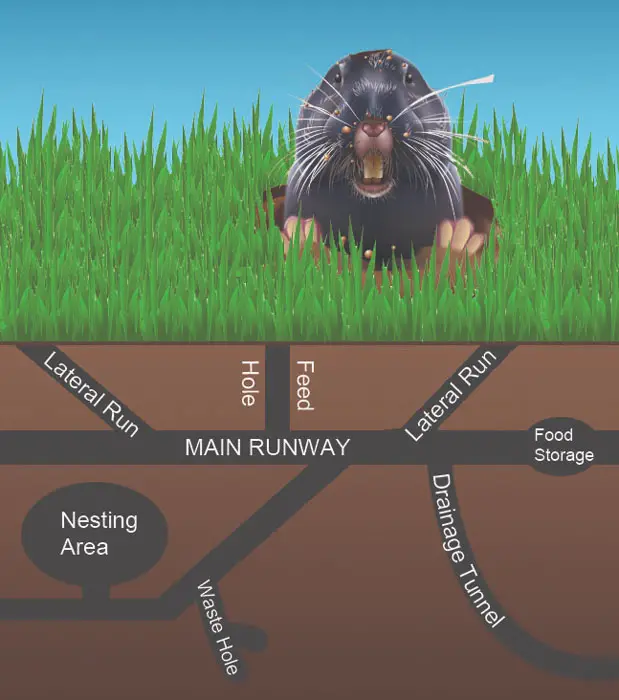
A photo showing the tunnel system of a gopher [source: Pro Pacific Pest Control]
Factors that Affect the Depth of Gopher Tunnels
They include the following:
- Soil type: Hard, compact soils can be difficult for gophers to dig through and may result in shallower tunnels. Loose soils can be easier to dig through and may result in deeper tunnels.
- Moisture levels in the soil: In dry soils, gophers may be forced to dig deeper to reach water sources, resulting in deeper tunnels. In wet soils, gophers may dig shallow tunnels to avoid water saturation.
- Availability of food sources: If food sources are abundant near the surface, gophers may not need to dig as deep for feeding tunnels. Conversely, if food sources are scarce near the surface, gophers may need to dig deeper for feeding tunnels.
- Predation pressure: Gophers may dig deeper tunnels to avoid detection and predation if predators are abundant in an area.
- Temperature fluctuations: Gophers dig deeper tunnels in areas with extreme temperatures, such as desert regions. This is to avoid temperature fluctuations and maintain a more stable environment within their burrows.
- Human activity or disturbance: The use of heavy machinery or other excavation equipment can disrupt gopher tunnels. This will force them to dig deeper.
- Seasonal changes in weather patterns: In harsh winters, gophers dig deeper tunnels to avoid freezing temperatures. In hot summers, they dig deeper tunnels to avoid extreme heat.
- Age, maturity and gopher species: Younger gophers may dig shallow tunnels than older, more experienced gophers. The experienced ones will dig deeper and more complex burrows. Some species are also known to dig deeper than others.
- Competition with other burrowing animals: If competition for resources is high, gophers may be forced to dig deeper tunnels. This is to avoid competition and maintain access to resources.
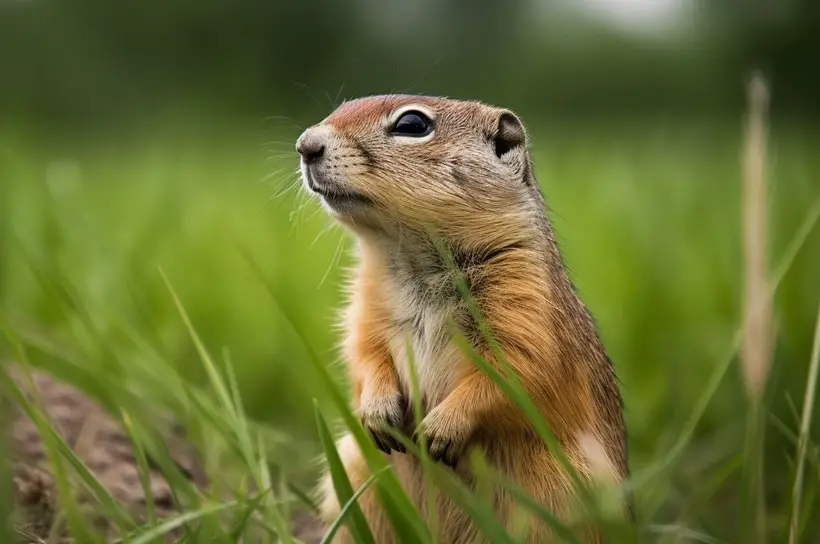
The Impact of Deep Gopher Tunnels on Plant Growth and Stability
Deep tunnels will have the following effects:
- Root damage: Gophers damage underground plant structures, weakening and stressing plants.
- Soil disturbance: These tunnels loosen and disturb the soil, affecting soil quality and plant physiology.
- Drainage issues: The tunnels also create drainage problems, allowing water to drain away too quickly, which affects plant growth.
- Soil compaction: Deep tunnels limit water and air movement, negatively impacting plant growth.
- Nutrient leaching: The tunnels can also leach nutrients deeper into the soil, making them less available to shallow-rooted plants.
- Vulnerability to pests: These burrows create entry points for pests that can damage or kill plants.
- Reduction in yield: Gophers consume or damage plant roots and parts, reducing crop yields and other plants.
Identifying Gopher Tunnels
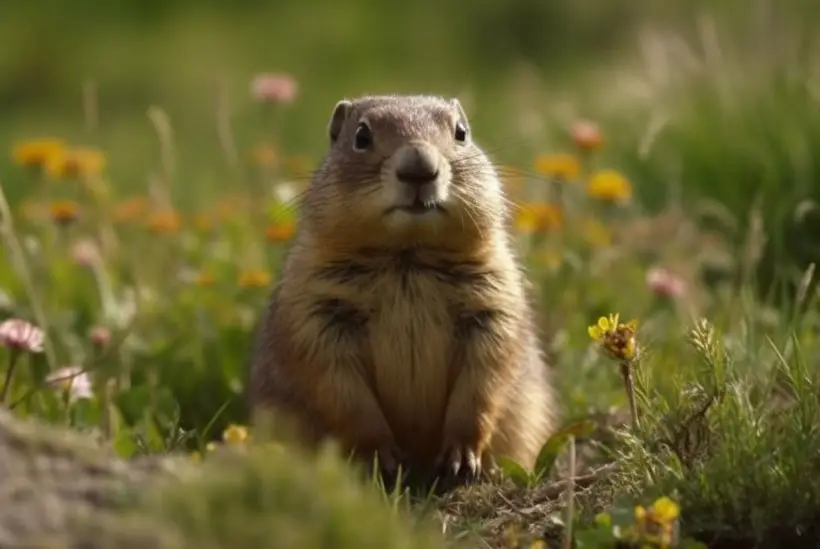
You can know that you have gopher tunnels in your lawn or garden if you have the following:
- Mounds of fresh soil: Gopher mounds are typically crescent-shaped and can be found near the entrance of their tunnels. They are made of loose, freshly dug soil.
- Soil disturbance: These garden pests create raised ridges or depressed surface tunnels as they burrow underground. These ridges can be visible on the surface and can be a sign of a gopher tunnel system.
- Plant damage: Gophers feed on the roots of plants. This can cause significant damage to crops, gardens, and landscaping. Above-ground signs of plant damage can include wilting, stunted growth, and dead or dying plants.
- Holes: They are typically circular and range from 2.5 to 3.5 inches in diameter. The holes are found near their tunnel systems and may be surrounded by fresh soil.
Methods of Identifying Depth and Measuring Gopher Tunnel Depth
If you can’t locate the tunnels or estimate their depths, use the following methods:
- Probing: It involves inserting a long, thin metal rod into the ground to locate gopher tunnels. If it sinks easily into the round, it indicates gopher holes.
- Water flooding: Simply pour water down a hole until it fills the tunnel system to know its depth.
- Smoke bombs: They release smoke into the tunnels, allowing you to visually trace the path of the tunnels and identify their location and depth.
- Excavation: Excavating the area around visible gopher holes can provide insight into the depth and extent of the tunnel system.
- Camera Scopes: These provide a visual image of the tunnels. They show the animal burrowing behavior and the extent of the tunnel system.
- Pets: Cats and dogs are known to dig out gopher holes. This method may not be reliable or effective as pets may not always be interested in digging up gopher tunnels.
Gopher Trapping and Removal
Use the following wildlife management practices to trap and remove these rodents from your gardens and lawns:
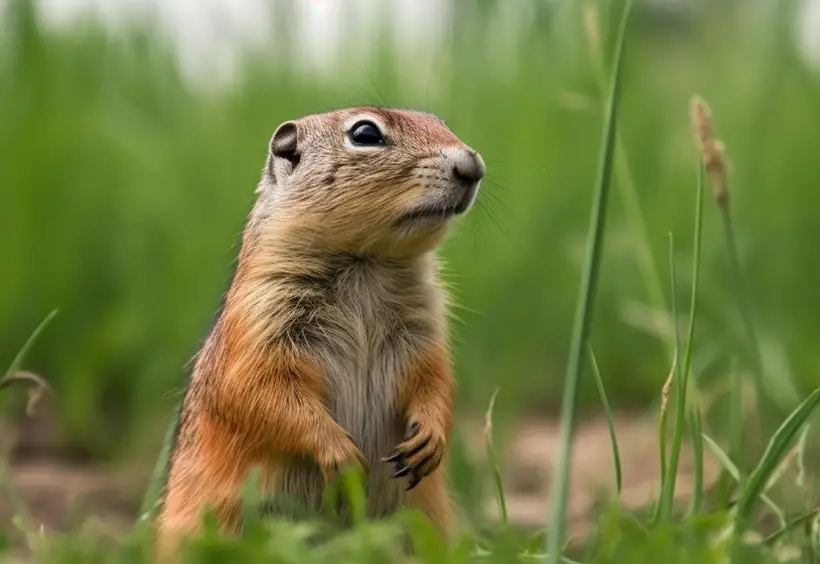
- Trapping: This method involves setting traps inside active gopher tunnels to capture and remove the gopher. Different types of traps are available, including box traps, snap traps, and choker traps.
- Poison bait: This method is not recommended for use in residential areas. It might cause harm to pets or wildlife that may ingest the bait.
- Fumigation: You will use gas to kill gophers in their tunnels.
- Burrow blasters: These devices use a controlled explosion to kill gophers in their burrows. This method can be effective but can also be dangerous and not legal in all areas.
- Repellents: They deter gophers from entering an area or drive them out of existing tunnels. Their effectiveness is limited, and they may need to be reapplied regularly.
- Companion Planting: This is one of the best natural pest repellents where you plant different crops. With companion planting, you could mix your crops with gopher repellents like alliums, daffodils, and castor beans.
Before using any method, identify the depth of gopher tunnels. It is essential for improving the effectiveness of trapping and removal methods. These rodents often have multiple tunnels at different depths. So, trapping or baiting them at the wrong depth can lead to unsuccessful removal.
If you’re interested in gophers, you might have some questions about these small rodents. Our articles on having gophers as pets and identifying gopher holes can provide some helpful answers. If you’re curious about keeping a gopher as a pet, you might want to read our article on having gophers as pets. We explain what kind of care they need and whether it’s legal to keep them as pets in your area. And if you’ve ever wondered what gopher holes look like, our article on identifying gopher holes can help you recognize them in your yard. Read these articles to learn more about gophers and how to deal with them.FAQs
Here are answers to some common questions about gopher tunnels:
Q: How Do Gopher Tunnels Affect Plant Growth and Stability?
Gophers damage roots and underground plant structures when they burrow, which can cause stress and weaken plants. The tunnels can also loosen and disturb the soil, affecting soil quality and water retention. This can lead to instability and nutrient depletion in plants.
Q: Can Gophers Damage Underground Utility Lines and Pipes?
Yes. Gopher infestation leads to burrowing activities. These can cause damage to irrigation systems and other brittle utility lines and pipes. They might, however, not affect strong water and gas pipes.
Q: How Can You Prevent Gophers from Re-Infesting Your Garden or Lawn After Removal?
Grow gopher-resistant plants, such as daffodils, salvias, hellebores, alliums, marigolds and so on. You can also install wire mesh barriers around the perimeter of your garden or lawn to prevent gophers from entering.
Also, research their wildlife behavior to understand them better. Additionally, regular lawn maintenance and upkeep of your yard can discourage gophers from taking up residence.
Conclusion
The above article has answered the question, “how deep are gopher tunnels.” It has also answered many other questions you had regarding these tunnels. The tunnels can vary in depth from a few inches to several feet.
This depends on factors such as tunnel type, soil type, moisture levels, predation pressure and much more.
- The most shallow tunnel is the feeding hole found 6 to 12 inches from the ground.
- Others, such as the nesting area, can be as deep as 6 feet, depending on the mentioned factors.
- Identifying physical cues such as mounds of fresh soil, soil disturbance, plant damage, and holes can help locate gopher tunnels.
- You can employ other methods if you cannot identify the location and depth using observation. They include smoke bombs, camera scopes, excavation, watering the hole and so on.
- To control these pests on your lawn or garden, you can use trapping, garden fencing, blasting, repellents, fumigation, and poisoning methods.
However, some of these control methods are ineffective and harmful to the environment. Further research on gopher behavior patterns and natural pest control methods is vital. It could help to develop more effective and sustainable solutions for gopher control.


